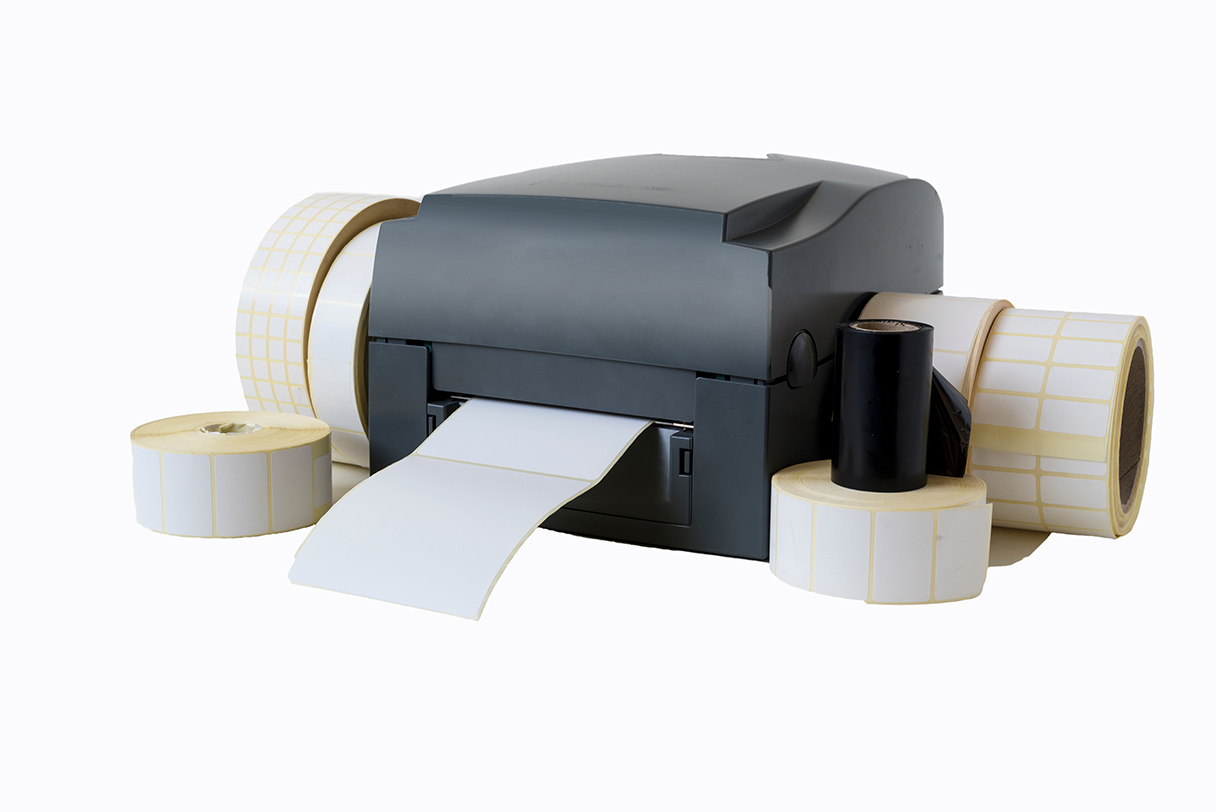Thermal labels are labels specifically designed for thermal printing applications. Thermal printing is a digital printing process that uses heat to produce an image on special heat-sensitive paper or thermal label stock. There are two main types of thermal printing technologies: direct thermal and thermal transfer. The choice of thermal label depends on the specific printing method:
- Direct Thermal Labels:
- Label Material: Direct thermal labels are made of paper that has a special heat-sensitive coating.
- Printing Process: These labels are printed using heat from a thermal print head, which activates the heat-sensitive coating, creating an image on the label.
- Usage: Direct thermal labels are commonly used for short-term applications, such as shipping labels, receipts, and tickets. However, the prints may fade over time when exposed to heat, light, or prolonged contact.
- Thermal Transfer Labels:
- Label Material: Thermal transfer labels are made of paper or synthetic materials and require the use of a thermal transfer ribbon.
- Printing Process: The printing process involves a thermal transfer ribbon (wax, resin, or a combination) that is heated by a thermal print head. The ink from the ribbon is transferred onto the label, creating a durable and long-lasting print.
- Usage: Thermal transfer labels are suitable for applications where durability is essential, such as product labels, barcodes, and tags. They are known for producing high-quality prints that resist fading and are more resistant to environmental factors.
Thermal labels are widely used in various industries, including retail, logistics, manufacturing, and healthcare. They are known for their efficiency, clarity, and ease of use. The choice between direct thermal and thermal transfer labels depends on the specific requirements of the application, including the desired durability of the prints and the environmental conditions to which the labels will be exposed.
What is the difference between thermal labels and regular labels? 4 things.
- Printing Method:
- Thermal Labels: Designed for thermal printing methods, these labels are imaged using heat from a thermal print head. There are two main types: direct thermal labels (heat-sensitive paper) and thermal transfer labels (require a ribbon).
- Regular Labels: Regular labels can be printed using various methods, including inkjet, laser, dot matrix, or offset printing. The choice of printing method depends on the type of printer used.
- Materials:
- Thermal Labels: Specifically designed for heat-based printing, thermal labels are often made of heat-sensitive paper or synthetic materials. Direct thermal labels are coated with a substance that darkens when heated, while thermal transfer labels use a ribbon to transfer ink onto the label.
- Regular Labels: These labels can be made from a variety of materials, including paper, plastic, fabric, or metal, depending on the application. The material choice is more diverse and not limited to those suitable for thermal printing.
- Durability:
- Thermal Labels: Depending on the type (direct thermal or thermal transfer), thermal labels can vary in durability. Thermal transfer labels, with the right materials, can offer higher durability and resistance to environmental factors.
- Regular Labels: Durability depends on the material and printing method. Some regular labels may be more resistant to certain conditions, while others may be less durable.
- Applications:
- Thermal Labels: Commonly used in applications where quick, on-demand printing is required, such as barcode labels, shipping labels, and receipts.
- Regular Labels: Used in a wide range of applications, including product labeling, packaging, branding, and various industries where specific material properties are needed.
Choosing between thermal labels and regular labels depends on the printing technology available, the application requirements, and factors such as durability and cost considerations.

